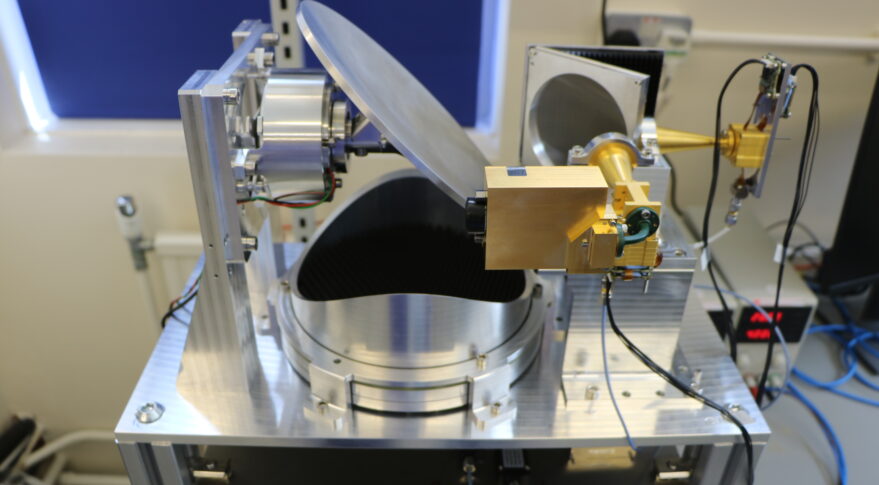TAMPA, Fla. — Spire Global said July 20 it plans to improve its weather forecast services by fitting future smallsats in its fleet with microwave sounders from RAL Space, the British government’s national laboratory.
RAL Space’s Hyperspectral Microwave Sounder (HYMS) instrument would enable Spire to measure atmospheric moisture for the first time, Spire spokesperson Kristina Spychalski said.
Spire’s constellation of more than 100 multipurpose satellites currently uses radio occultation and reflectometry to collect atmospheric, surface and space weather data.
Radio occultation instruments can measure atmospheric temperature, humidity and pressure. Spire uses reflectometry sensors for data on soil moisture, ocean winds and sea ice.
Adding HYMS to future satellites would provide meteorological agencies that use Spire’s space-based data “with the inputs needed to deliver even more accurate forecasts,” said Kevin Petty, vice president of weather and Earth intelligence at Spire.
Spychalski said a demonstration mission using a Spire satellite the size of 16 cubesats will take place “by late 2023 to early 2024,” and will fly HYMS in space for the first time.
According to RAL Space, the shoebox-size HYMS offers up to four times more frequency resolution than much larger sounders flying on government-operated weather satellites.
“The HYMS technology we’ve created is more advanced than anything that is currently on the market, and it is extremely exciting to be able to offer its use to industry for space applications,” said Peter Huggard, Millimetre Wave Technology Group Leader at RAL Space.
“The improved spectral resolution of our HYMS instrument will provide better atmospheric information for weather forecasting and, when deployed in a constellation of small satellites, a much-reduced interval between measurements.”
Boston-based startup Tomorrow.io announced plans in March to add satellites with microwave sounders to the weather constellation it expects to have deployed in orbit by the end of 2024.
Rei Goffer, Tomorrow.io’s co-founder and chief strategy officer, told SpaceNews July 20 that the company is working with U.S. government-funded MIT Lincoln Laboratories on a microwave sounder.
The instrument will be an improved version of a payload used by NASA’s tropical storm-monitoring TROPICS cubesat constellation, or Time-Resolved Observations of Precipitation Structure and Storm Intensity with a Constellation of SmallSats.
A pathfinder satellite for TROPICS was successfully launched last year.
However, the first two cubesats for the TROPICS constellation failed to reach orbit June 12 after the upper stage of Astra’s Rocket 3.3 vehicle shut down prematurely.
The launch was one of three NASA had booked from Astra to complete the constellation, which can still meet its science goals with four satellites. Astra is reviewing the failure.
Goffer said Tomorrow.io selected MIT Lincoln Laboratories after a comprehensive study of sounder technologies primarily because of TROPICS’ higher technology maturation level.

